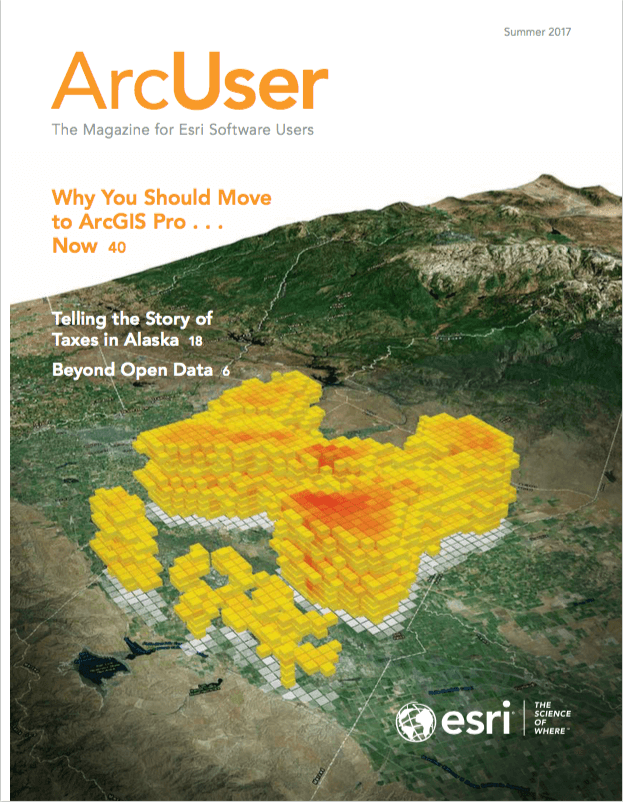The work of a resourceful team at the Alaska Office of the State Assessor (OSA) is the subject of “Telling the Story of Taxes in Alaska” in this issue.
Each year the OSA must compile tax information for each of Alaska’s 164 municipalities. Previously, this voluminous and detailed tax data was gathered, handled, and presented in tabular form and shared in a report known as Alaska Taxable. The knowledge of how to carry out this complex task was limited to just a couple of staff members who were nearing retirement. There was a real fear that this valuable knowledge might be lost.
Faced with the challenge of preserving institutional knowledge about how to produce an information product so vital to the functioning of Alaska’s government and the prosperity of its citizens, the team formed to solve this problem decided to apply GIS. This team pioneered the use of Survey123 for ArcGIS to capture tax data and present the information in an interactive and accessible manner using an Esri Story Maps app.
Not only did team members capture the knowledge needed to create this report, but they also optimized the process of gathering and assembling data. By elegantly and lucidly presenting this complex data as a story map called Alaska Taxable 2016, they made a treasure trove of information about revenue sources in Alaska accessible to many more people, both inside and outside state government.
Although innovative ArcGIS tools were used to accomplish their goals, the members of the OSA team were doing what people have been doing with GIS for more than 40 years. They applied the spatial framework of GIS to their work because it allowed them to solve problems, improve processes, realize cost savings, and accomplish things that would not have been possible in the absence of GIS.
The theme of this year’s Esri User Conference, The Science of Where, celebrates the power of using this framework for applying science to almost everything so we can organize and integrate data, look at things holistically, and see relationships more clearly so we can meet the challenges we face at all levels—from local to global.


